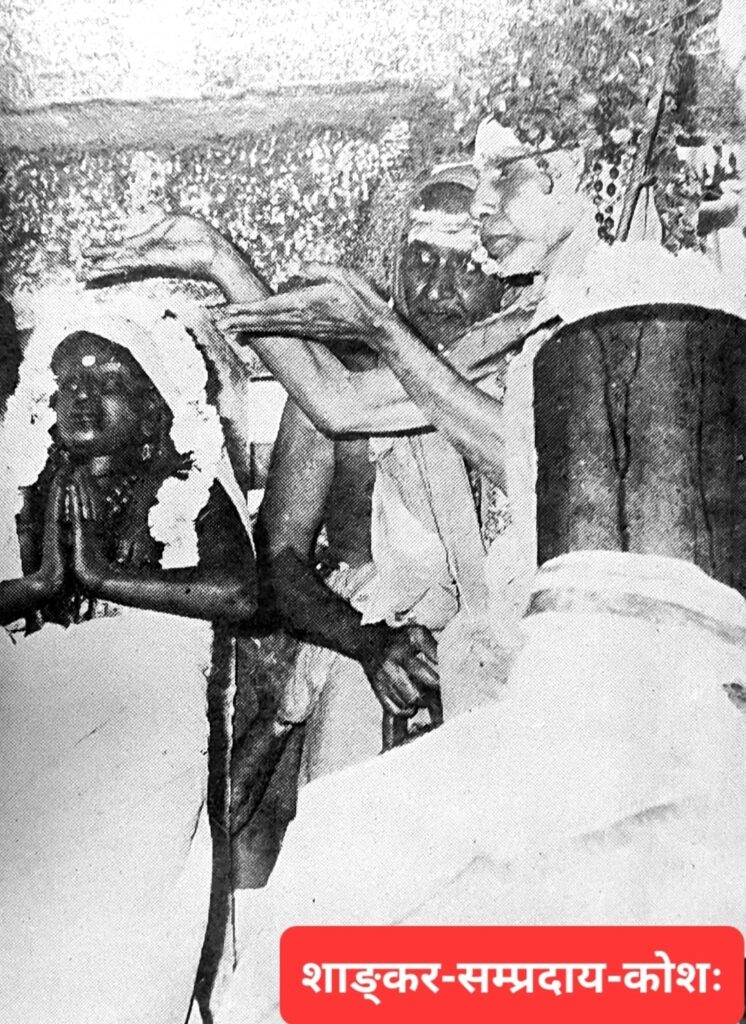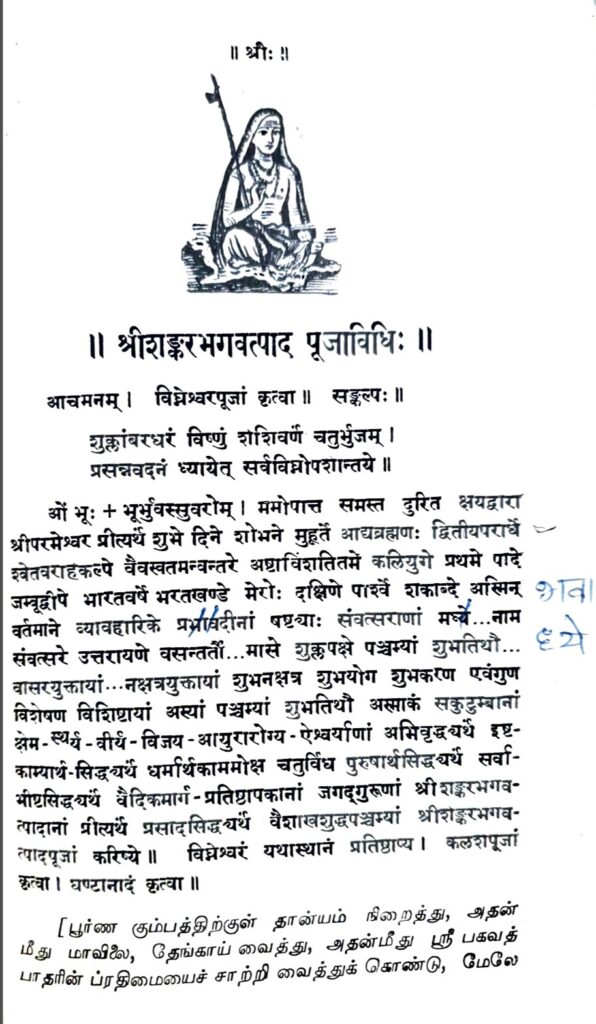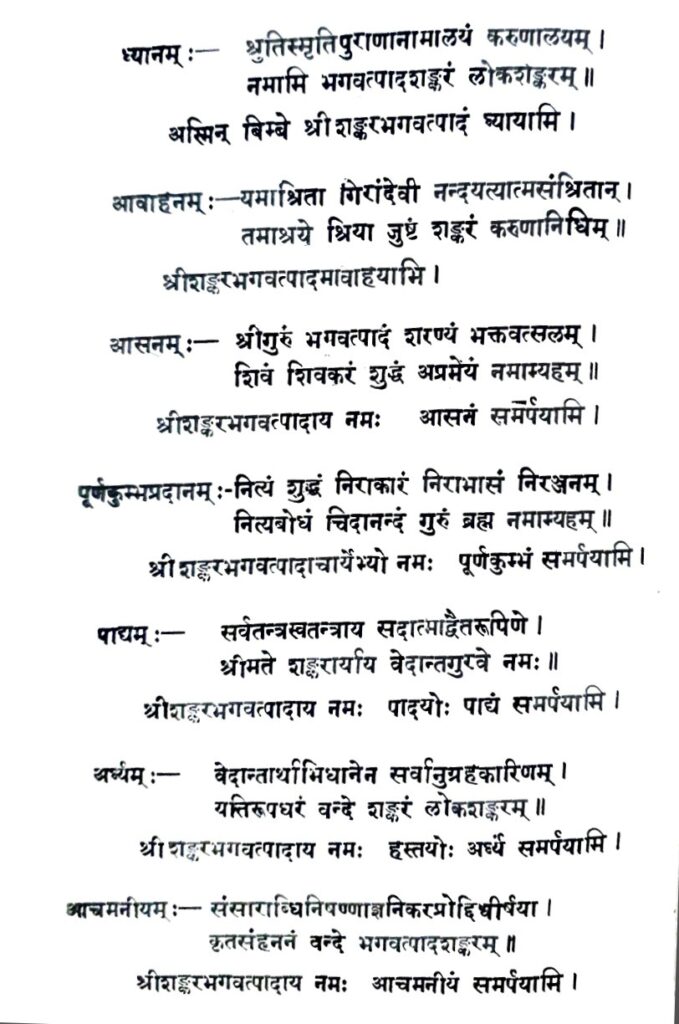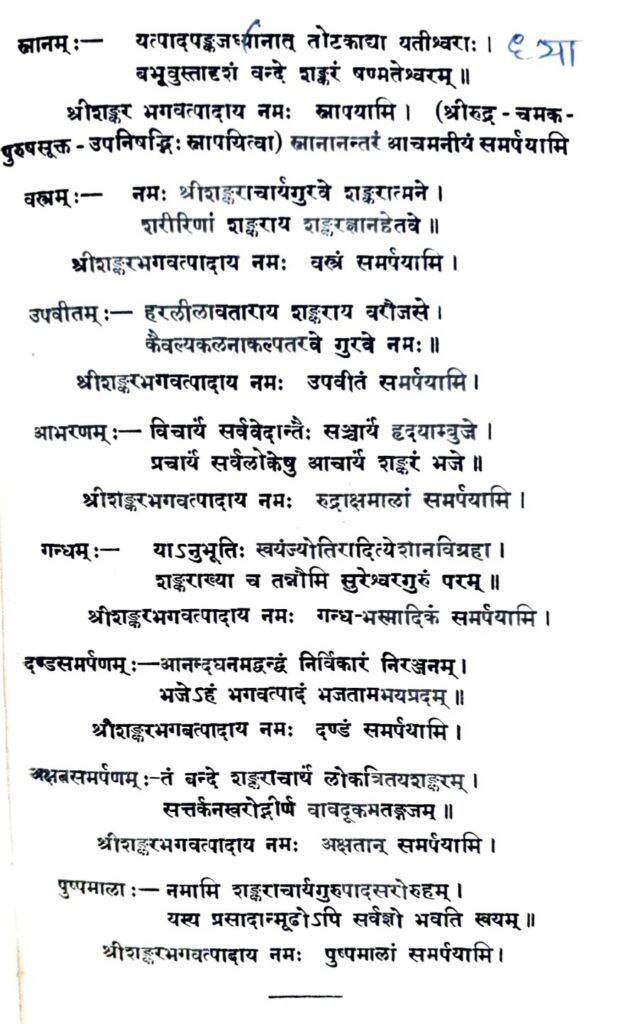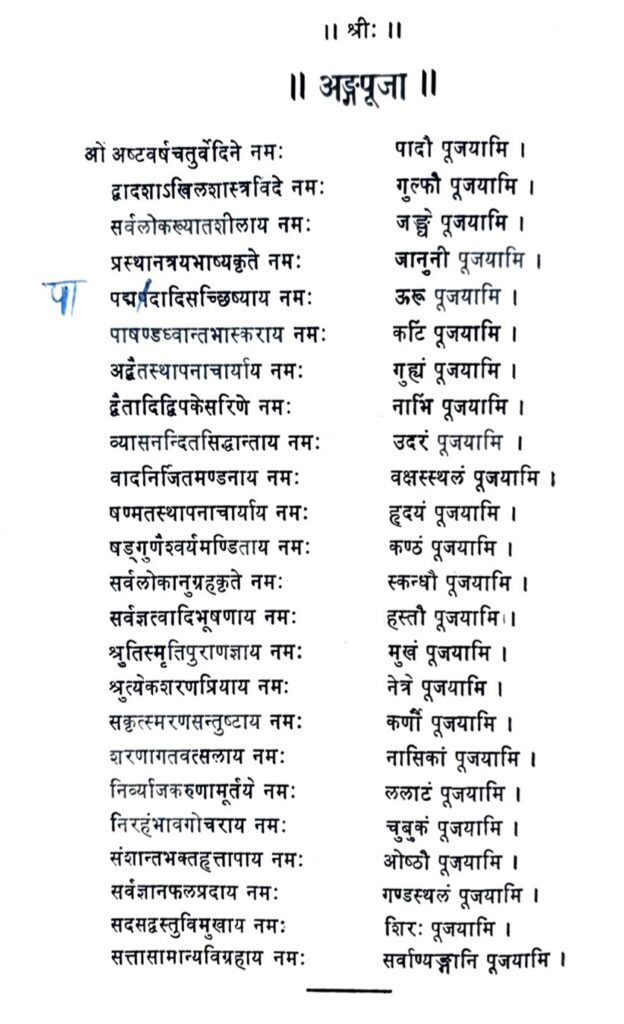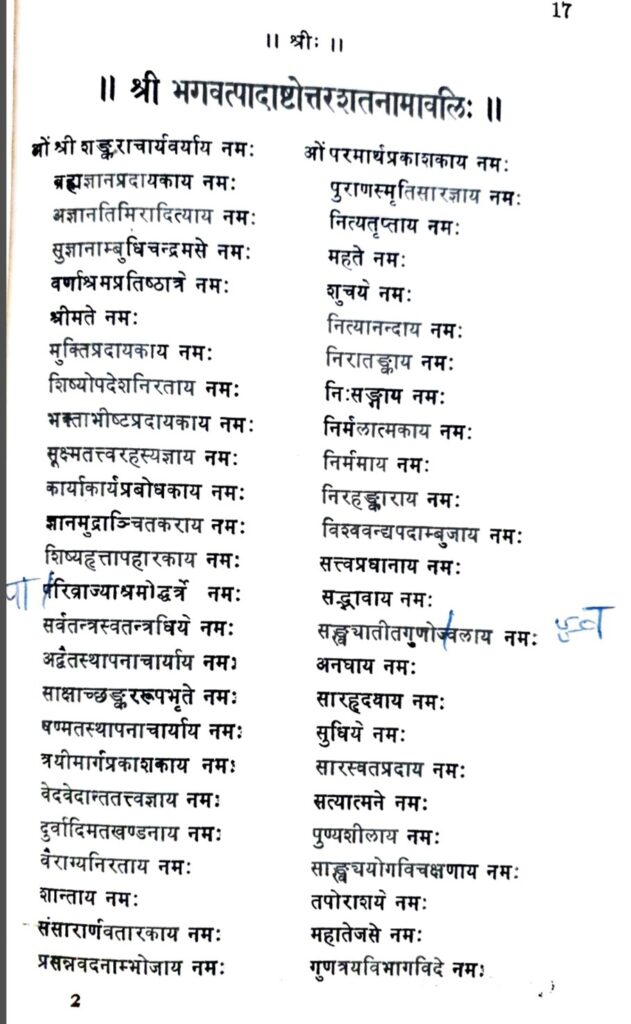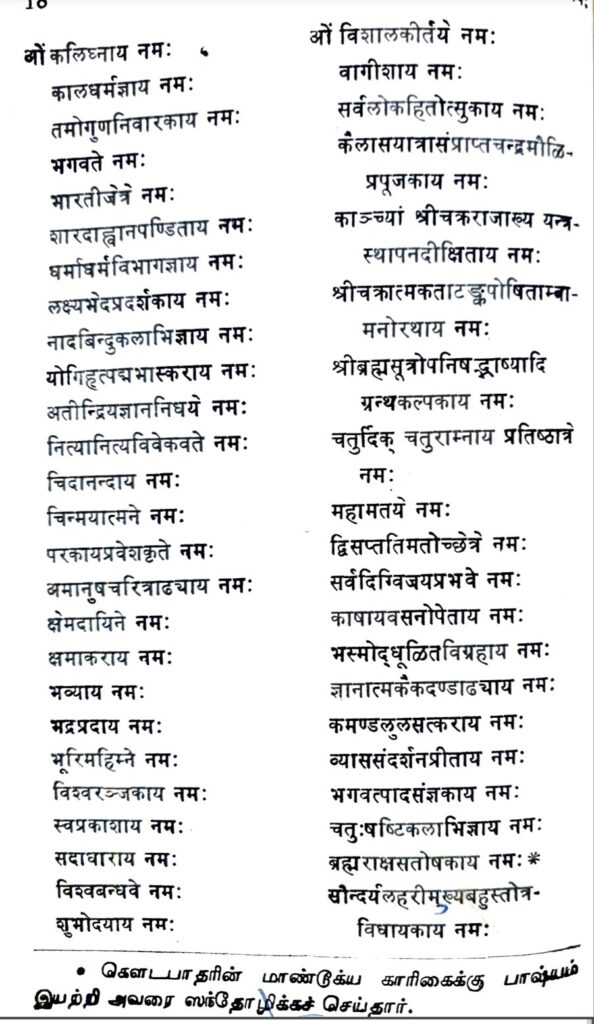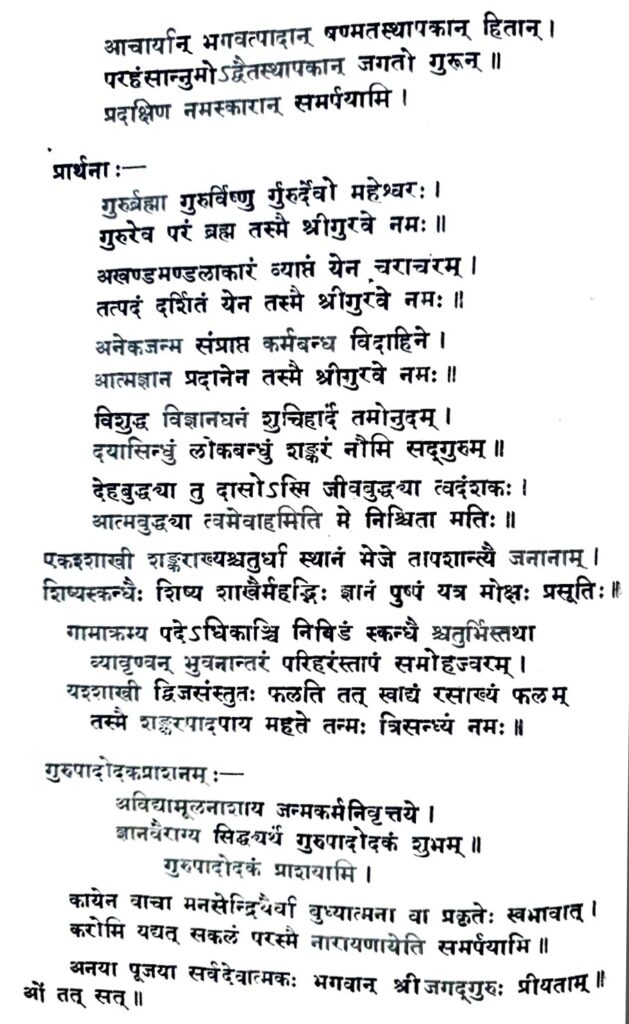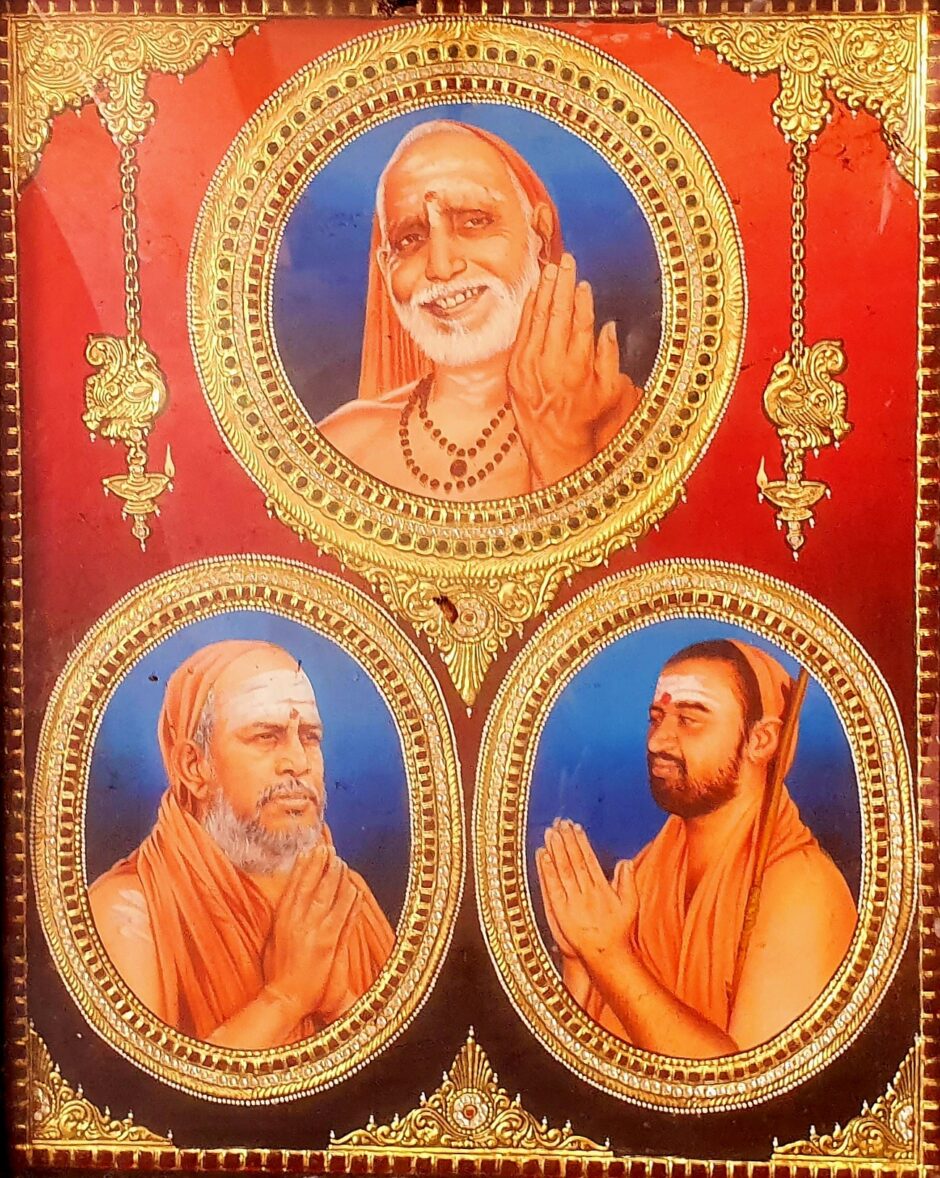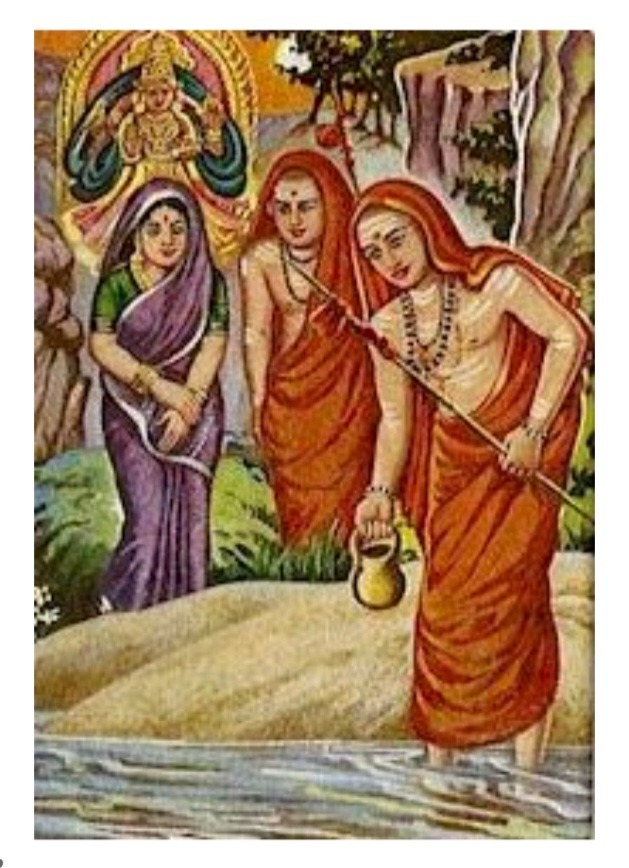(Special Series of Articles commemorating the Maha Kumbhabhishekam of Shri Sureshvaracharya Adhishtanam Shrine at Shri Kanchi Kamakoti Peetham Shrimatham, Kanchipuram on 03.5.2024.(Part-3)
Other references to Shri Sureshvaracharya in the Guruparampara of Shri Kanchi Kamakoti Peetam
The Gururatnamala of Shri Sadashiva Brahmendra Saraswati , disciple of the 57th Acharya of Moolamnaya Sarvajna Shri Kanchi Kamakoti Peetam, was one of the earliest works of Shri Sadashiva Brahmendra that was published (1895) several decades before the Vani Vilas publications of Shri Sadashivendra Saraswati appeared.
परम् अन्तिकसत्-सुरेश्वराद्यैः
परमाद्वैत-मतं स्फुटं प्रवेद्य।
परिकाञ्चिपुरं परे विलीनः
परमायास्तु शिवाय सद्गुरुर्नः॥
गुरुरत्नमाला – ३३.
The Gururatnamala says, “Expounding on the supreme advaitasiddhanta clearly accompanied by shishyas such as Shri Sureshvaracharya who were by His side, (Shri Shankaracharya) became one with Paradevata. May that Sadguru bless us with auspiciousness.”
Shri Sureshvaracharya and Shri Kanchi Kamakoti Pitham Guru Parampara
As stated previously, Shri Sureshvaracharya served as the guardian and mentor of the young Shri Sarvajnatmendra Saraswati Shankaracharya Swamigal, the third Acharya of Shri Kamakoti Peetam. This is owing to the latter’s young age at the time of taking sannyasa. Shri Sarvajnatmendra Saraswati Shankaracharya Swamigal’s Sankshepa Shareerakam pays tribute to his vidyaguru Shri Sureshvaracharya saying that, “May the dust of the feet of Sureshvaracharya be victorious – We are grateful by gaining whose proximity, for their unlimited fame of uplifting innumerable disciples”
यदीयसम्पर्कमवाप्य केवलं वयं कृतार्था निरवद्यकीर्तयः। जगत्सु ते तारितशिष्यपङ्क्तयः जयन्ति देवेश्वरपादरेणवः॥
Acharya Shri Madhusudana Saraswati comments on this verse saying, “इदानीं स्वगुरुं वार्तिककारं पूजयति। He then glosses देवेश्वरस्य as “सुरेश्वरस्य”establishing the identity of the guru of Shri Sarvajnatmendra Saraswati.
Another commentary, the Anvayarthaprakashika on Sankshepashareerakam also confirms this identity, reinforcing this understanding within the tradition.
Many scholars have hypothesized on the concluding work of Sankshepa Sharirakam, references to the king named there and many of the conclusions are are inconclusive. Leaving these surmises and to historians, we focus on revelling in the greatness and glory of Shankara Sampradaya.
Shri Sarvajnatma refers to the Bhagavan at Anantashayanam or Tiruvananthapuram (अविरलपदपङ्क्तिः पद्मनाभस्य पुण्या॥). As per the Kanchi Kamakoti Peetam Guru Parampara, Shri Sarvjnatmendra Saraswati belonged to Brahmadesham which is geographically proximal to Tiruvanantapuram.
The fourth Acharya Jagadguru Shri Satyabodhendra Saraswati Swamigal has composed a work named Padakashatam. This is referred to in the texts of Punyashloka Manjari (this was one of the early grantha publications that was printed in Kumbhakonam in the late 1800s)
The 65th Acharya of Shri Kanchi Kamakoti Moolamnaya Sarvajna Peetam Shri Sudarshana Mahadevendra Saraswati Shankaracharya Swamigal pays tribute to the fifth Acharya in his Jagadguru Parampara Stava saying
“The noble Jnanananda muni also known as Jnanottama, who was immersed in the worship of Chandrachuda. He was the author of Chandrika. I seek refuge in Him”
ज्ञानानन्द-मुनीन्द्रार्यं ज्ञानोत्तम-पराभिधम् । चन्द्रचूड-पदासक्तं चन्द्रिका-कृतम् आश्रये ॥ १३ ॥
From this, we understand that the fifth Acharya, Shri Jnananandendra Sarasvati, was also known as Shri Jnanaghana (or Bodhaghana). The Punyashloka manjari pays tribute to him as “ज्ञानोत्तम इति अवाप्त बिरुदः” and refers to him as being born in “Chola desha in the village named Mangala”.
* The Chola desha from times immemorial has been one of the mainstays of Shri Kanchi Kamakoti Peetam
